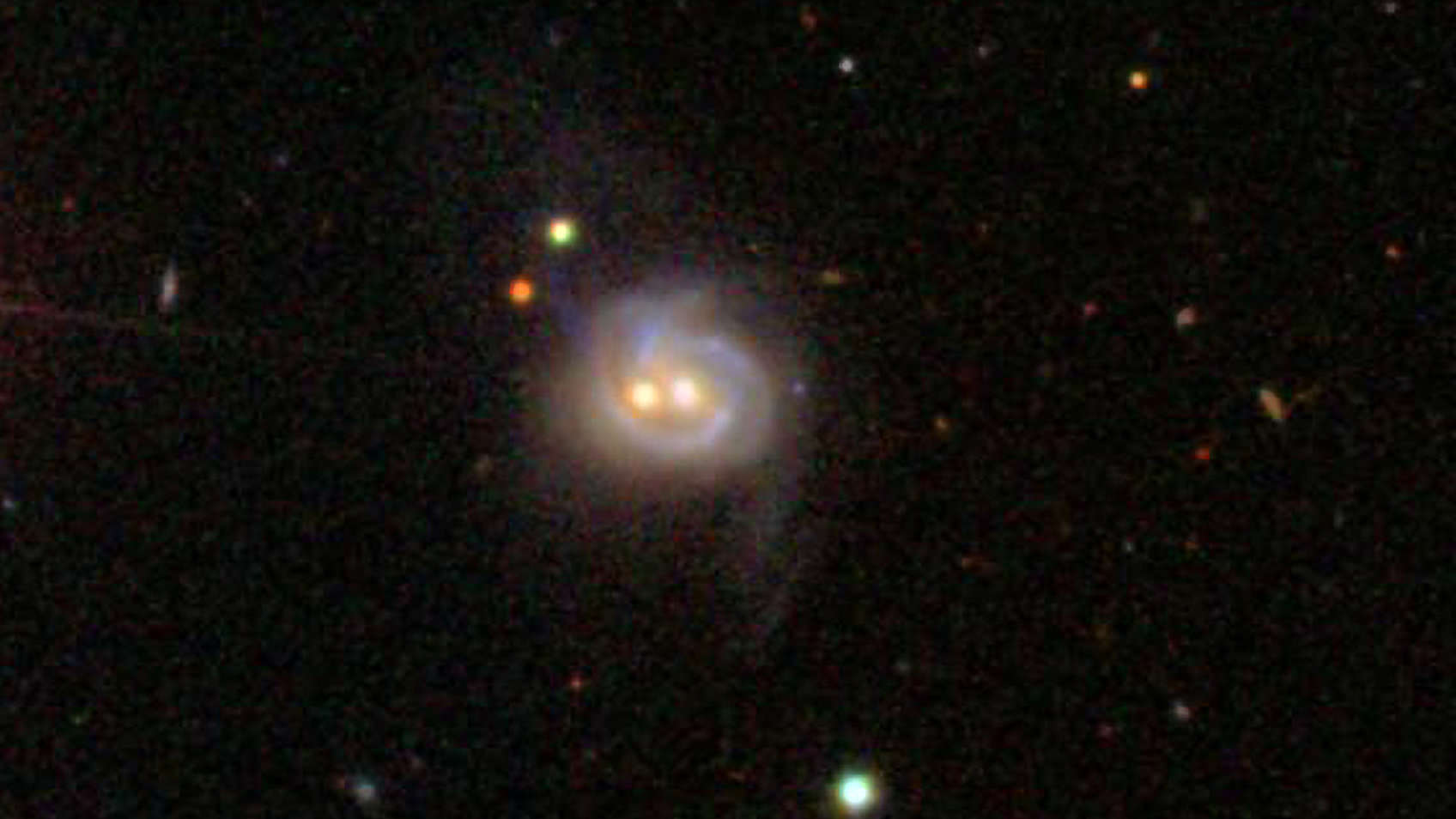[/caption]
Why does this galaxy appear to be smiling? The answer might be because it has been holding a secret that astrophysicists have only now just uncovered: there are two -- count 'em –
two
gigantic black holes inside this nearby galaxy, named Markarian 739 (or NGC 3758), and both are very active. While massive black holes are common, only about one percent of them are considered as active and powerful – called active galactic nuclei (AGN). Binary AGN are rarer still: Markarian 739 is only the second identified within half a billion light-years from Earth.
Markarian 739 is actually a pair of merging galaxies. For decades, astronomers have known that the eastern nucleus of Markarian 739 contains a black hole that is actively accreting matter and generating an exceptional amount of energy. Now, data from the Swift satellite along with the Chandra X-ray Observatory Swift has revealed an AGN in the western half as well. This makes the galaxy one of the nearest and clearest cases of a binary AGN.
The galaxy is 425 million light-years away from Earth.
How did the second AGN remain hidden for so long? "Markarian 739 West shows no evidence of being an AGN in visible, ultraviolet and radio observations," said Sylvain Veilleux, a professor of astronomy at University of Maryland in College Park , and a coauthor of a new paper published in Astrophysical Journal Letters. "This highlights the critical importance of high-resolution observations at high X-ray energies in locating binary AGN."
Since 2004, the Burst Alert Telescope (BAT) aboard Swift has been mapping high-energy X-ray sources all around the sky. The survey is sensitive to AGN up to 650 million light-years away and has uncovered dozens of previously unrecognized systems.
Michael Koss, the lead author of this study, from NASA's Goddard Space Flight Center and UMCP, did follow-up studies of the BAT mapping and he and his colleagues published a paper in 2010 that revealed that about a quarter of the Swift BAT AGN were either interacting or in close pairs, with perhaps 60 percent of them poised to merge in another billion years.
"If two galaxies collide and each possesses a supermassive black hole, there should be times when both black holes switch on as AGN," said coauthor Richard Mushotzky, professor of astronomy at UMCP. "We weren't seeing many double AGN, so we turned to Chandra for help."
Swift's BAT instrument is scanning one-tenth of the sky at any given moment, its X-ray survey growing more sensitive every year as its exposure increases. Where Swift's BAT provided a wide-angle view, the X-ray telescope aboard the Chandra X-ray Observatory acted like a zoom lens and resolved details a hundred times smaller.
The distance separating the two black holes is about 11,000 light-years , or about a third of the distance separating the solar system from the center of our own galaxy. The dual AGN of Markarian 739 is the second-closest known, both in terms of distance from one another and distance from Earth. However, another galaxy known as NGC 6240 holds both records.
Source:
Swift Telescope webpage
You can follow Universe Today senior editor Nancy Atkinson on Twitter: @Nancy_A. Follow Universe Today for the latest space and astronomy news on Twitter @universetoday and on Facebook.
 Universe Today
Universe Today
